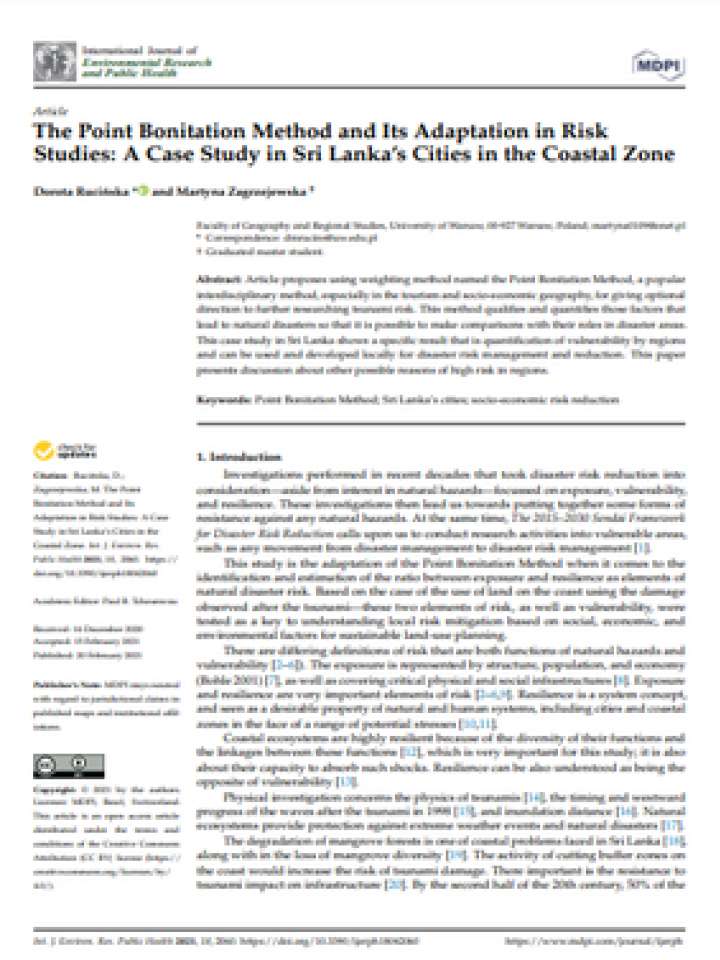The Point Bonitation Method and its adaptation in risk studies: A case study in Sri Lanka's cities in the coastal zone
The article proposes using a weighting method named the Point Bonitation Method, a popular interdisciplinary method, especially in tourism and socio-economic geography, for giving optional direction to further researching tsunami risk. This method qualifies and quantifies those factors that lead to natural disasters so that it is possible to make comparisons with their roles in disaster areas. The case study in Sri Lanka shows a specific result that is the quantification of vulnerability by regions and can be used and developed locally for disaster risk management and reduction. This paper presents a discussion about other possible reasons for high risk in regions.
The study showed that the height of the wave was not the dominant factor affecting the destruction of houses in the analyzed regions of Sri Lanka, which confirms other studies. The worst situation is in Colombo, a region located in the west that requires greater focus. Moreover, there are other strong factors that also impact coastal vulnerability. The authors suggest that this may be because of the kind of spatial management as well as procedures in building code implementation. Regions of Sri Lanka located in the west and south require greater focus with investment for sustainable space planning, and disaster risk reduction (DRR) is needed in the country to improve the exposure and resilience relationship.
Explore further
